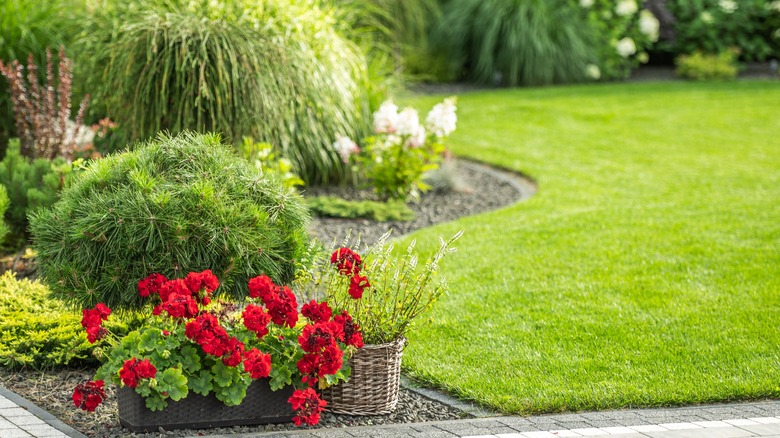The Weed You Should Keep Out Of Your Garden At All Costs (& How To Prevent It In The Future)
Maintaining your garden takes hard work and dedication. When it is well cared for, it produces glorious flowers and organic bounties. However, weeds can still find a way in — even invasive ones, like dodder weeds. Therefore, keep these intruders out of your garden at all costs. Before you drop everything to get rid of weeds, these parasitic plants luckily do not typically take over flower beds. That does not mean you cannot prepare yourself by learning how to prevent them.
Dodder (Cuscuta spp.) weeds are invasive plants, especially in states like Texas and Florida, which can cause serious problems for your garden, including smaller harvests, susceptibility to disease, growth problems, insect issues, and even death. States, like California, have programs where citizens must notify officials if they suspect this pest. Before you can prevent future infestations, you must know how to combat new ones you see the moment they pop up. You can identify the weed easily, as it looks like a pile of yellow or orange string. Outside sources are the main distributors, and can include garden tools, animals, our clothing, irrigation, livestock manure, and even the seeds we plant. So, while you can take preventative measures, you also must know eradication protocols in case some of the seeds find a way to your garden. Then, you can take preemptive steps for extra protection, especially if you live in USDA hardiness zones 4 through 11.
Remove the weeds and host plant before you start prevention measures
The key to preventing dodder weeds is early detection and knowing the proper removal process. Unfortunately, these invasive plants do not just disappear on their own. They start with one host plant and eventually take over your entire garden. Therefore, removing the weed the moment you see it is the only way to alleviate any current issues and prevent it from spreading. From its roots, pull up the dodder weeds. Once you remove the affected area, prune your original plant down to where the infestation was located. However, most of the time they are too engulfed by the invasive parasite, needing to be removed as well. For plants you can save, replant them in dodder-free areas with species not susceptible to the weed, closely monitoring for lingering issues.
Either burn with a heavy-duty tool that will kill pesky weeds, like a propane torch, or wrap the invaders in a trash bag before disposing. Once you are finished, immediately wash the clothing you were wearing to stop the spread of loose seeds. If the area had a major infestation, monitor it to ensure no new dodder weeds pop up. You may also consider using herbicide. Just remember, the sooner you take care of the problem, the easier it will be to stop future outbreaks.
Use clean machinery and tools and plant dodder-free seeds
Prevent dodder weeds by using clean machinery and gardening tools, as well as planting dodder-free seeds. Most weeds can transfer from a tool or machinery to your yard and garden, eventually setting roots. Remember to thoroughly clean and disinfect your gardening tools after each use, disposing of the yard waste and debris that you collected, especially if the tool was borrowed and taken to a different property. Use mild soap, hot water, a brush, and a sprayer for caked on messes to thoroughly clean. Then, disinfect with bleach, disinfectant wipes, alcohol, or pine oil products.
As a strong, invasive species, dodder weed seeds can remain in the soil for up to 20 years, waiting to fully take over. Eliminate the chance of this happening by planting dodder-free seeds. You can take it a step further and plant a hardy addition that is not an easy target for these invaders, like corn or soybeans. This is ideal if you have a large patch from a past infestation. For smaller gardens, monocot species like grasses, orchids, and bamboo will be a nice resistant alternative. If you follow these steps and still have dodder weeds, contact a professional landscaping team.


